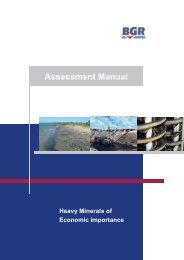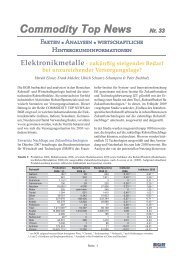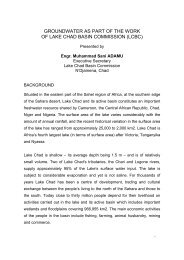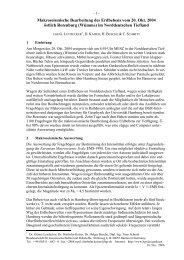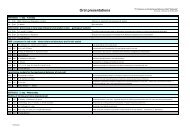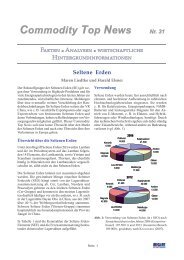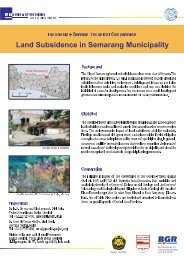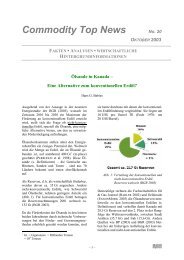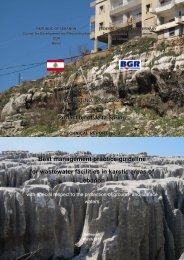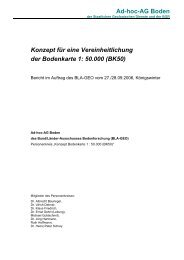THE SMOOTH SOUNDING GRAPH. A Manual for Field Work ... - BGR
THE SMOOTH SOUNDING GRAPH. A Manual for Field Work ... - BGR
THE SMOOTH SOUNDING GRAPH. A Manual for Field Work ... - BGR
Create successful ePaper yourself
Turn your PDF publications into a flip-book with our unique Google optimized e-Paper software.
1.2. The homogeneous underground<br />
7<br />
The homogeneous underground represents an electrical conductive half-<br />
space with the resistivity ρ. It is limited by the earth's surface (insulator).<br />
A current electrode A will be placed at the earth's surface. A second elec-<br />
trode B is moved to infinity (this is necessary in order to complete the<br />
current circle). If the electrodes are supplied by a direct voltage, then a<br />
direct current I will flow through the earth. At the electrode in point A the<br />
current spreads radially (Fig.2). Now we consider in the subsurface the<br />
skin of a hemisphere with radius r and thickness dr, which has its central<br />
point in A. We then determine the resistance of this hemispherical skin<br />
with respect to the current running radially from the "point source" in A.<br />
We apply Ohm's law <strong>for</strong> the wire (equ.1)<br />
R =<br />
a<br />
ρ<br />
q<br />
The length a corresponds to the thickness dr of the spherical skin. The<br />
cross-section q corresponds to the surface of the hemisphere with radius<br />
r, which is 2πr 2 , because the surface of the whole sphere is 4πr 2 . The re-<br />
sistivity is that of the homogeneous earth. There<strong>for</strong>e the resistance dR of<br />
this thin skin is:<br />
ρ<br />
π 2<br />
dr<br />
dR = (4)<br />
2 r<br />
The next step will be to determine the resistance of a thick hemispherical<br />
body with an inner radius r1 and an outer radius r2 (Fig.3). We do this by<br />
summing up hemispherical skins the radius of which arises from r1 up to<br />
r2.<br />
This is a simple integration of the skin-resistances dR from r1 to r2. Those<br />
who are not familiar with solving simple integrals will find the used <strong>for</strong>-<br />
mula in elementary mathematical tables given e.g. in any technical man-<br />
ual. The resistance R1,2 of our hemispherical body is, using equation (4),<br />
R<br />
1,<br />
2<br />
r<br />
2<br />
2<br />
ρ 1<br />
= ∫ dR =<br />
2 ∫ dr<br />
π r<br />
r1<br />
r<br />
r1<br />
=<br />
ρ ⎡ 1⎤<br />
⎢<br />
−<br />
2π<br />
⎣ r ⎥<br />
⎦<br />
r2<br />
r1<br />
=<br />
ρ ⎛ 1 1<br />
⎜ −<br />
2π<br />
⎝ r1<br />
r2<br />
⎟ ⎞<br />
⎠<br />
(5)



